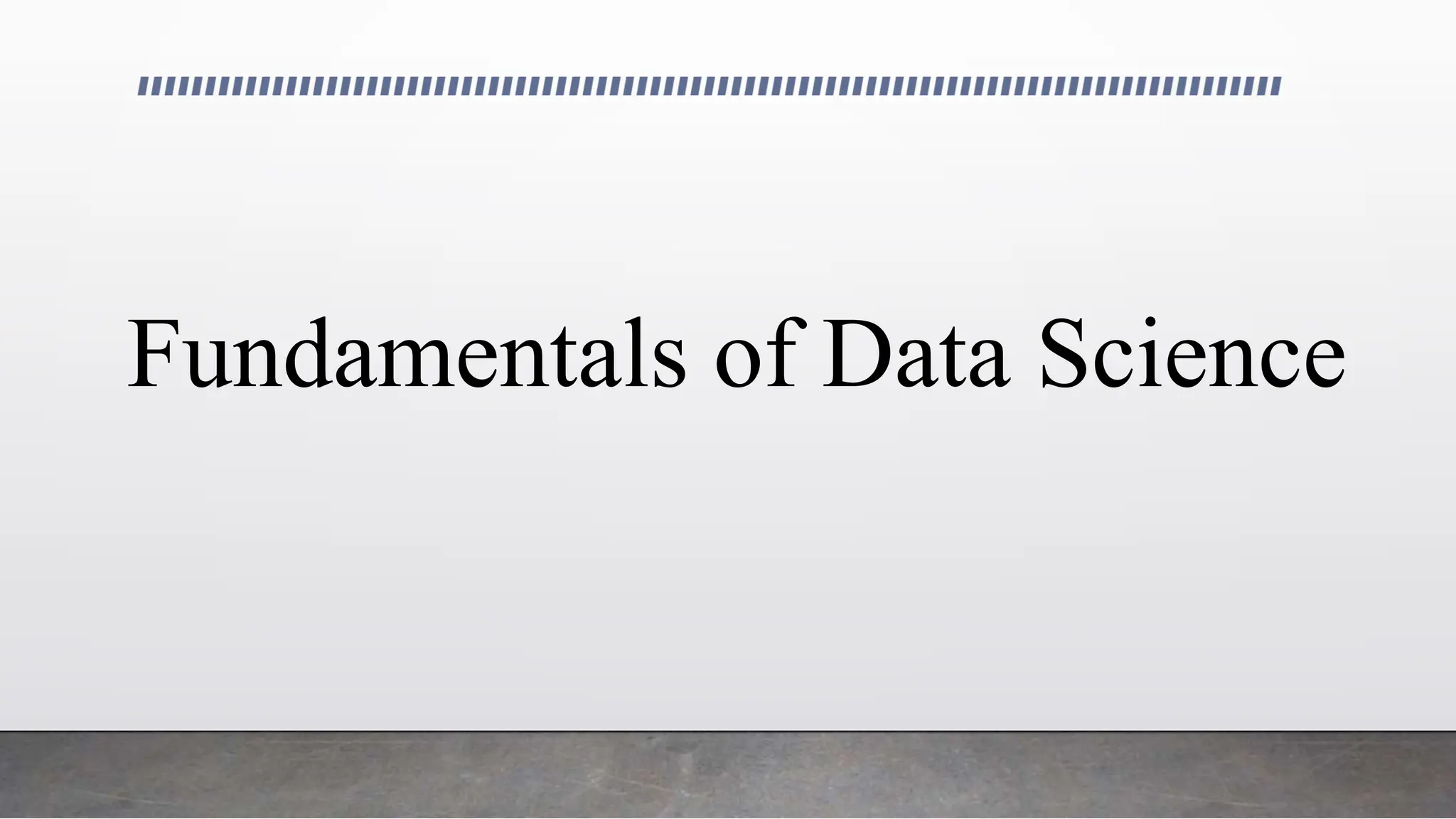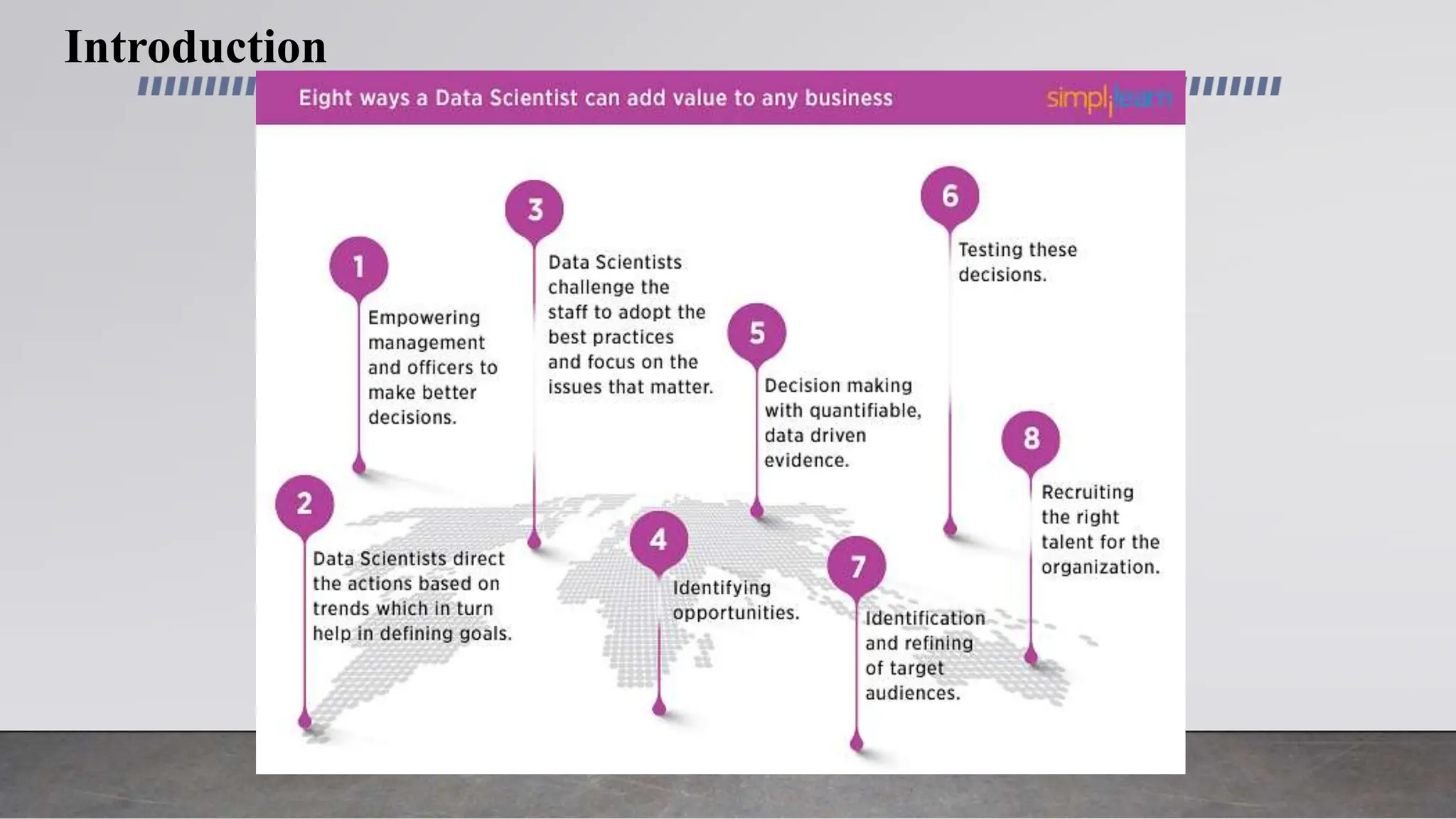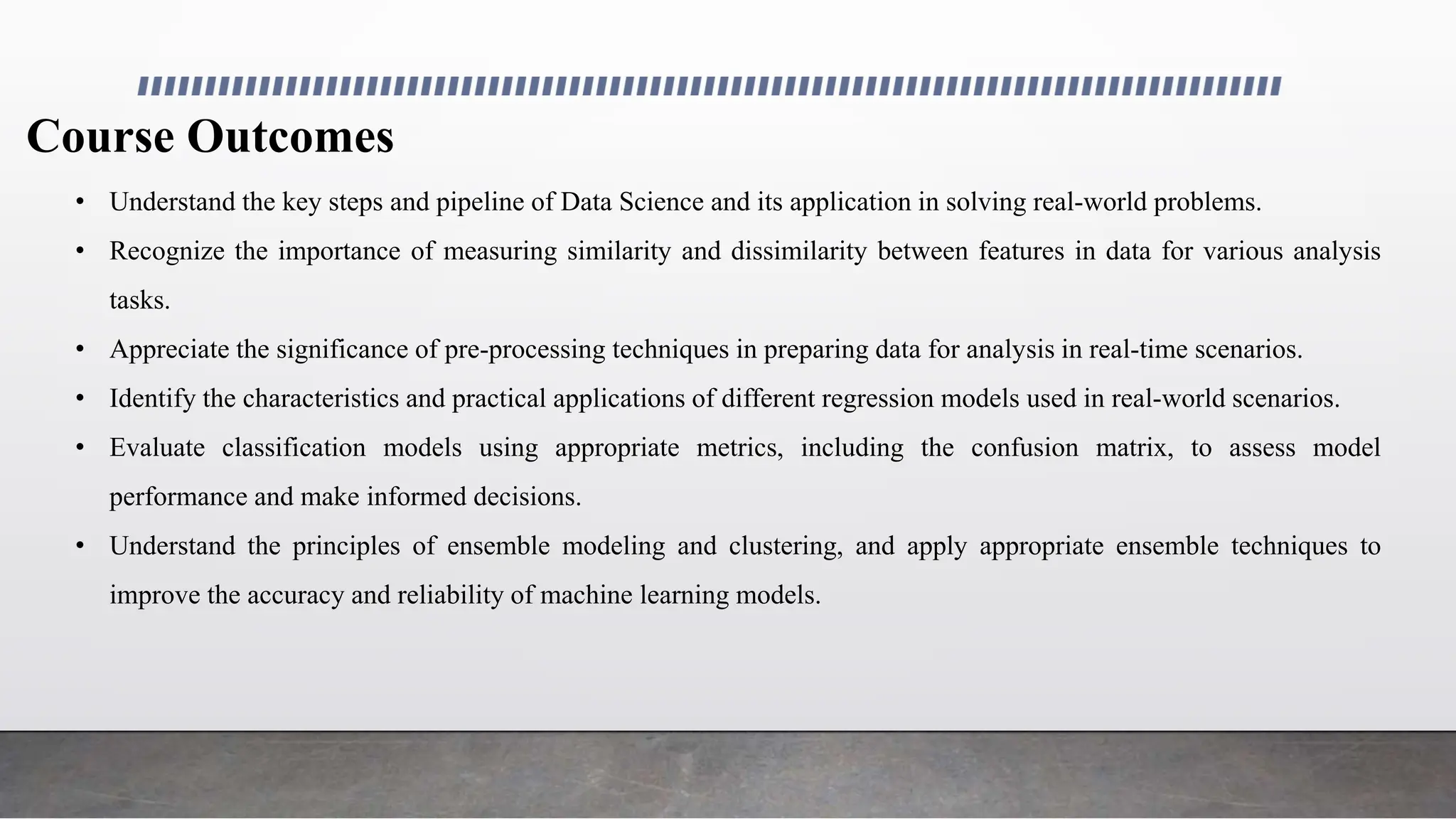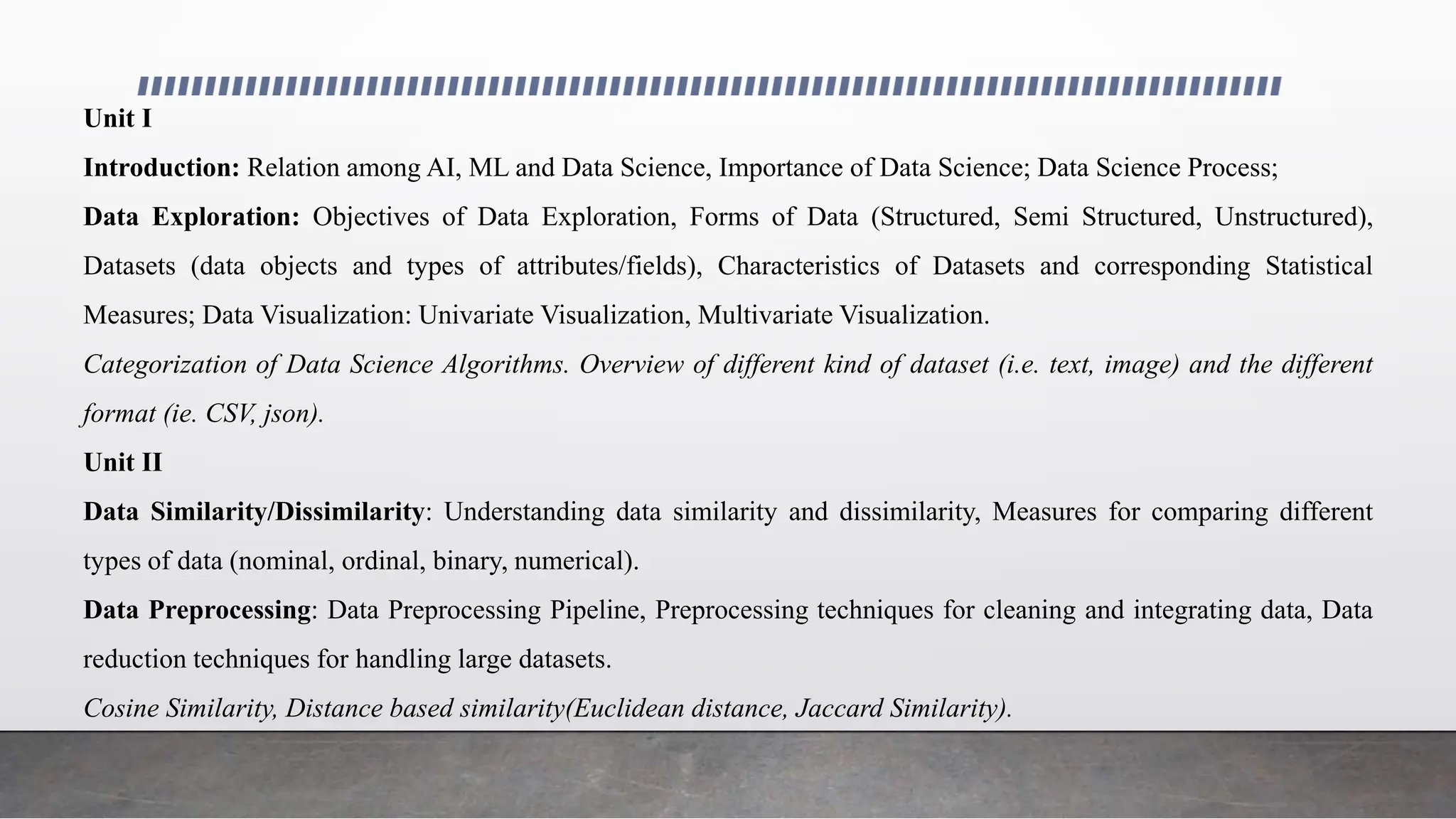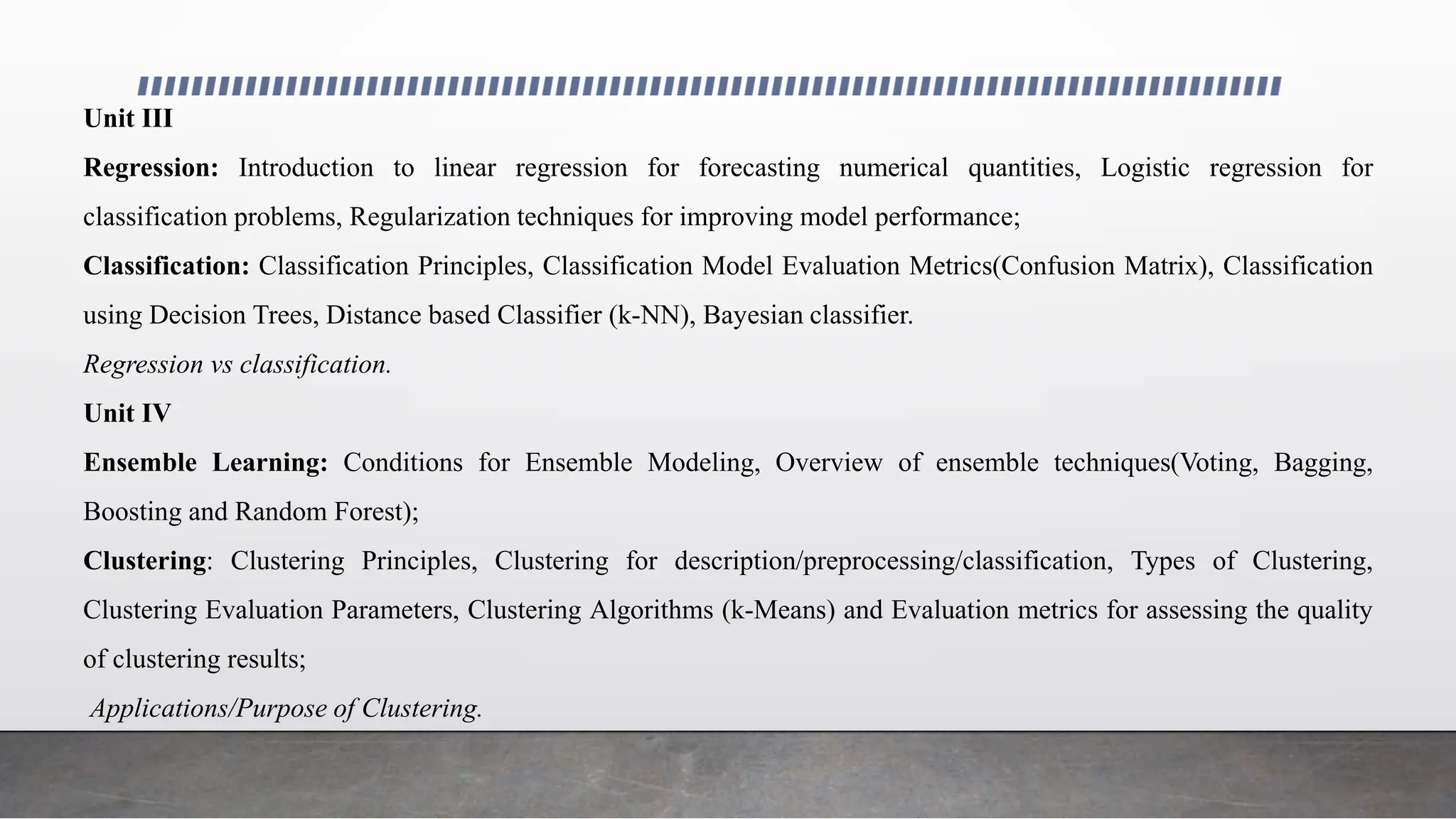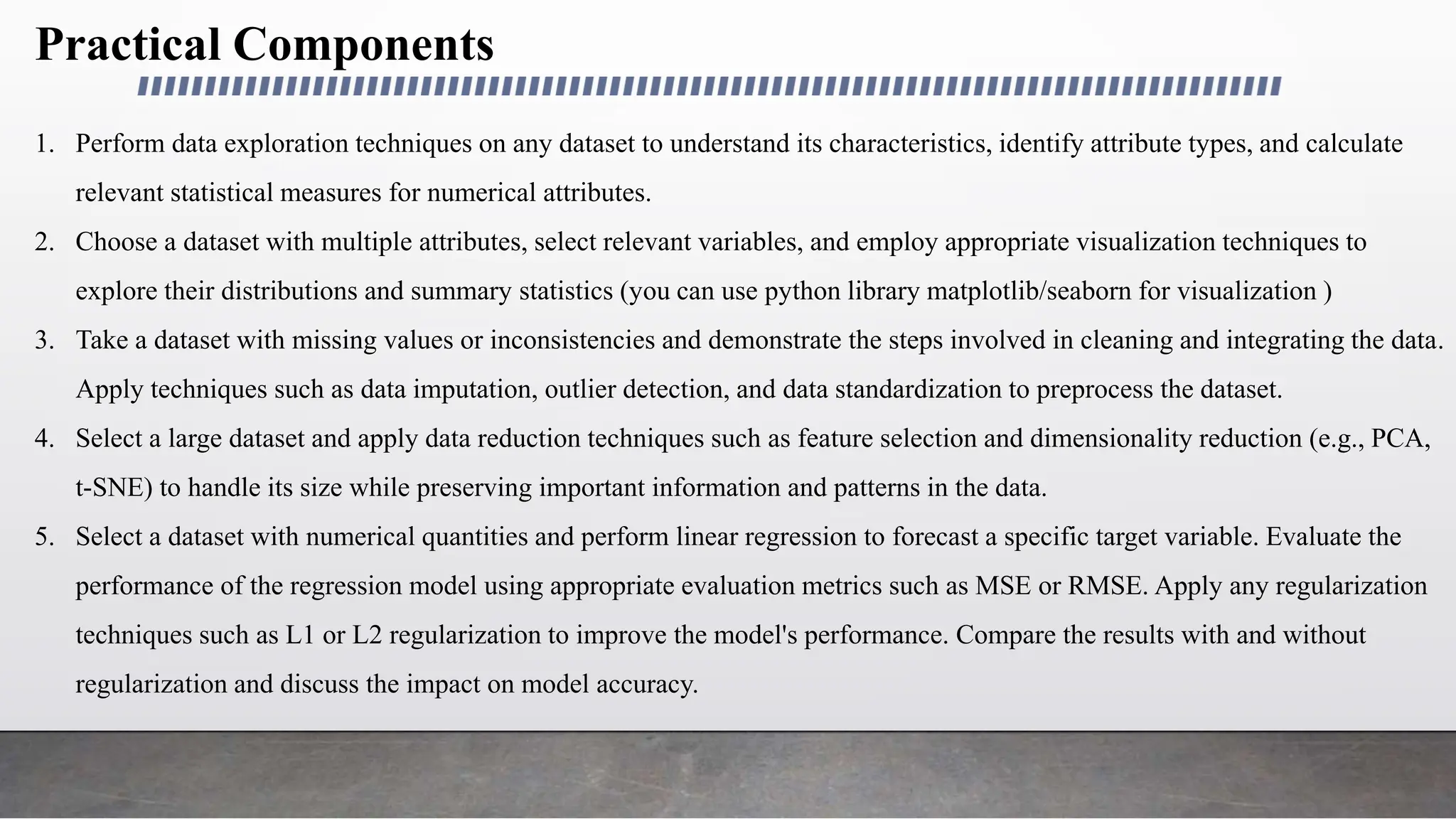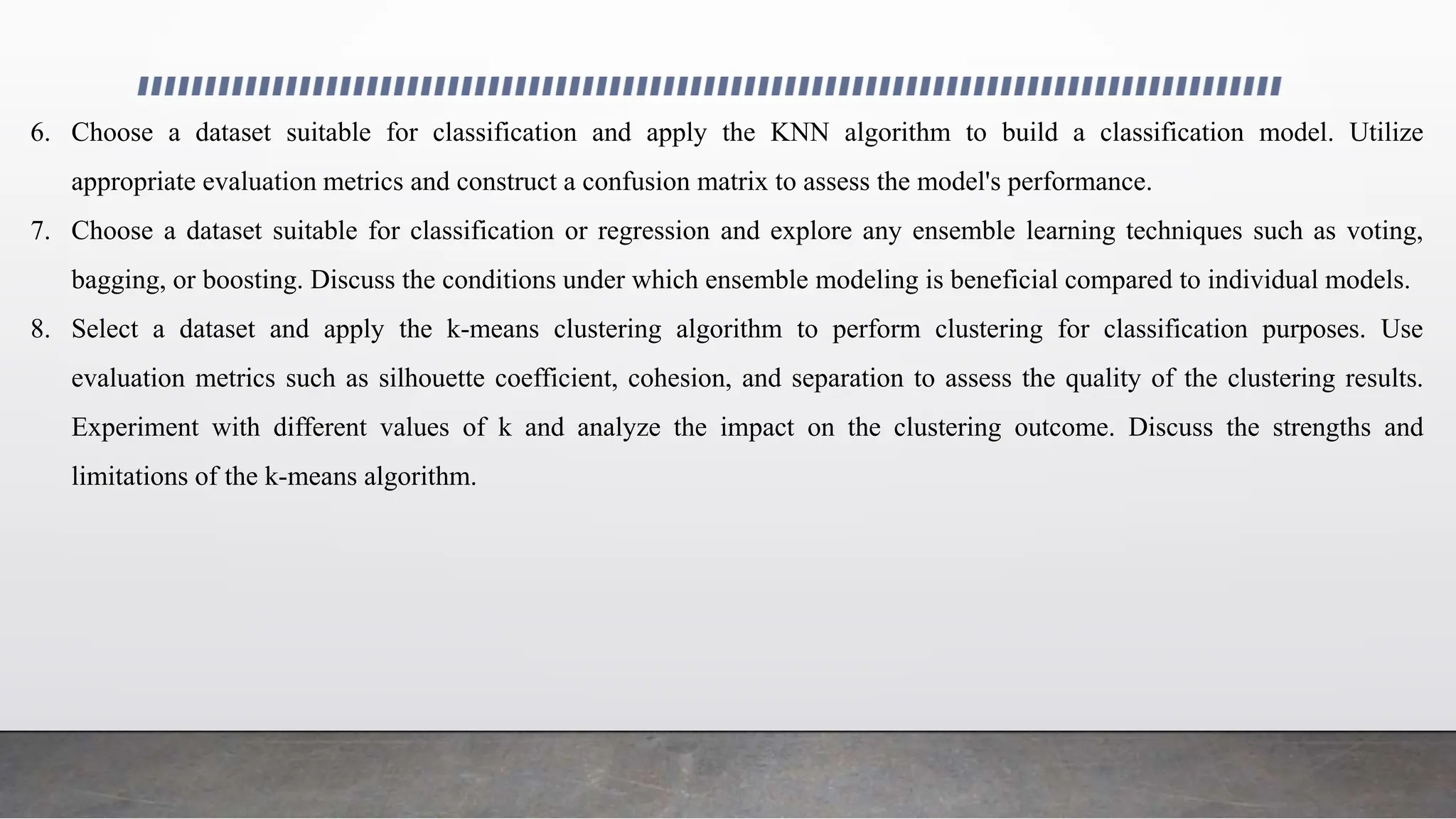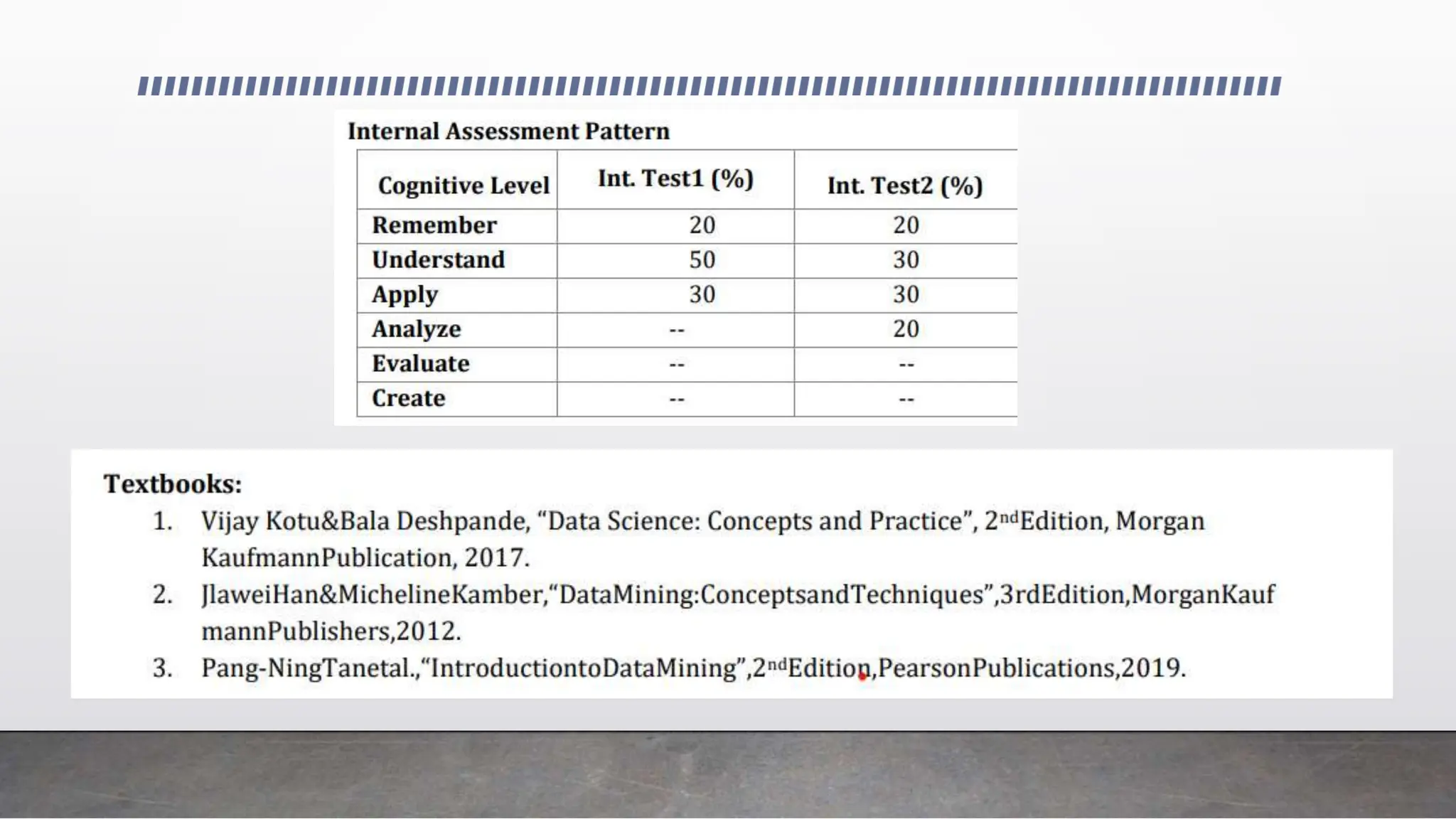The document outlines a fundamentals of data science course, emphasizing key concepts such as the data science process, data exploration, and the significance of measuring similarity and dissimilarity between features. It covers practical applications of regression and classification models, ensemble techniques, and clustering algorithms, alongside relevant metrics for model evaluation. Additionally, it includes hands-on components for applying data exploration, preprocessing, regression, classification, ensemble learning, and clustering techniques on various datasets.
